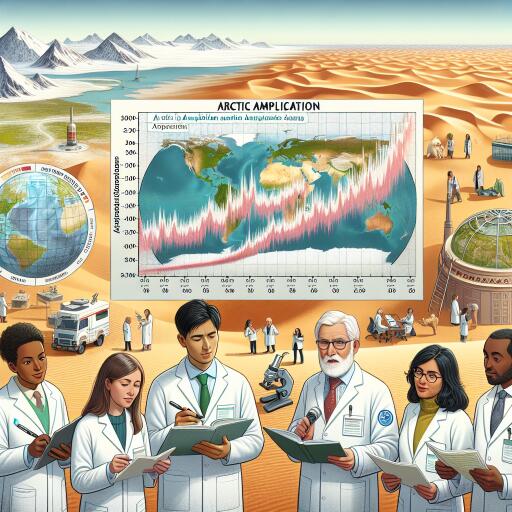
Understanding Arctic Amplification: The Double-Edged Sword in the Battle Against Desertification
In a groundbreaking study spearheaded by experts at Hong Kong Baptist University, a revolutionary understanding of atmospheric phenomena has come to light, offering an intriguing perspective on the environmental dynamics of West and South Asia over the last two decades. This research, now enlightening the pages of the distinguished Proceedings of the National Academy of Sciences, reveals a complex narrative involving Arctic amplification—a consequence of global warming—and its significant role in the noticeable decline of dust levels within these regions. Yet, this silver lining carries with it a cautionary tale about the future challenges in our fight against desertification.
The Consequences of Dust Reduction
The ordeal surrounding dust aerosols—comprising not just of soil particles but also of salt, bacteria, and even toxic metals—transcends mere environmental concern. Its far-reaching impact affects everything from air quality to food security, from public health to the very fabric of regional and global climate systems. Particularly in West and South Asia, the manifestation of these dust storms has led to significant socio-economic setbacks, including detrimental health consequences for millions and staggering economic losses.
Despite various theories attributing the recent downturn in dust activity to increased precipitation or improved land management practices, this new study shifts the spotlight onto a more influential underlying cause: changes in atmospheric circulation as a direct result of Arctic amplification.
Deciphering the Arctic Amplification Effect
Arctic amplification describes a phenomenon where the Arctic region warms more rapidly than other parts of the globe. This disparity has major repercussions, including altering the polar jet stream and thus, the atmospheric circulation patterns that dominate mid-latitudes. Through comprehensive data analysis, the research identifies a correlation between this altered state and the diminishing dust transport from Northeast Africa to the Middle East, amidst other affected areas.
Moreover, the study observed a notable decrease in zonal winds, crucial players in dust transportation across West and South Asia. This change, coupled with regional temperature contrasts, appears to foster a sea breeze-like circulation, further stifling dust movement from the Middle East towards South Asia.
The Future of Dust Levels and Desertification Measures
The implications of these findings unveil an intriguing paradox where the fight against global warming inadvertently suppresses dust levels, albeit potentially temporarily. Predictive models within the study suggest a continuation of this trend until around 2050. However, with the global stride towards carbon neutrality expected to mitigate some warming effects, dust levels might see a resurgence by the century’s end, challenging us to reconsider our long-term strategies against desertification.
In light of these discoveries, the emphasis on establishing sustainable, effective plans to combat desertification becomes more crucial than ever. An integrated approach, combining efforts to reduce global warming without exacerbating the dust dilemma, stands out as a pivotal strategy. This serves as a reminder that our environmental interventions carry wide-ranging consequences, necessitating a balanced consideration of both global and regional ecological dynamics.
As the world marches towards the goal of carbon neutrality and heightened environmental stewardship, the insights garnered from this research underscore the importance of vigilance and adaptability in our policies and practices. Balancing the victories against global warming with proactive measures to manage and mitigate dust and desertification challenges will be key to safeguarding our planet’s health and humanity’s future.





Leave a Reply